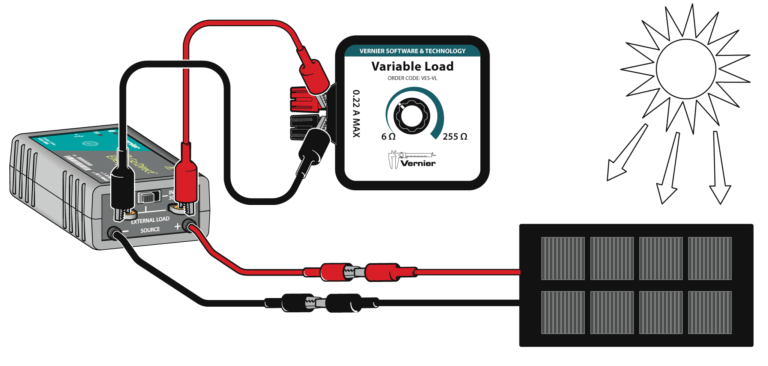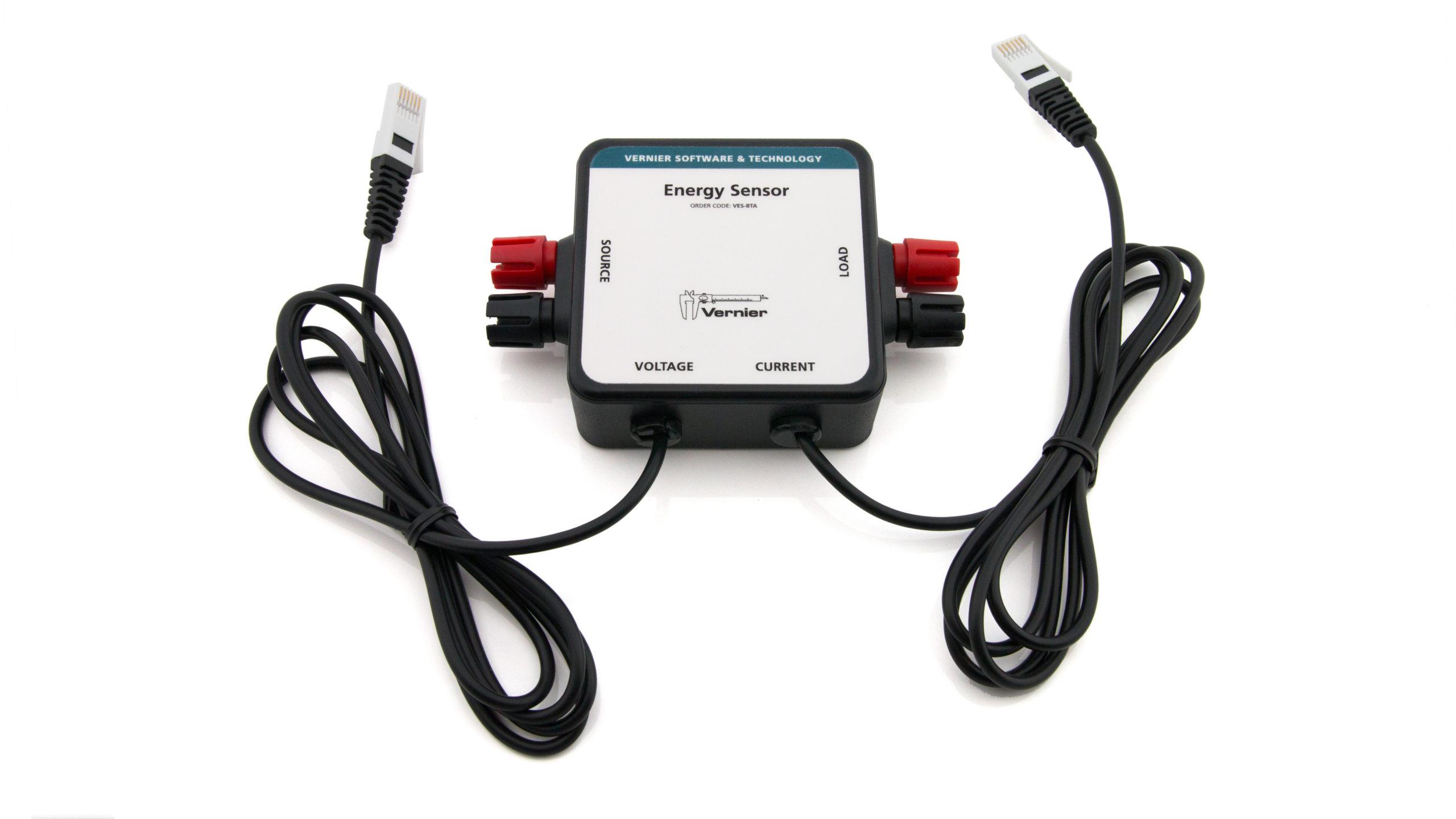Effect of Load on Solar Panel Output
Experiment #18A from Renewable Energy with Vernier
- Education Level
- High School

Introduction
Every power source has a characteristic internal resistance based on the materials out of which it is made and the physics of its operation. For example, a modern rechargeable AA battery generally has an internal resistance between 0.01 Ω and 0.10 Ω and a small generator such as those used for classroom wind energy experiments may have an internal resistance between 10 Ω and 100 Ω.
Solar panels, which operate in a very different way from either batteries or generators, have an internal resistance that depends on several variables, including temperature and the amount of light incident on the solar panel. In other words, the internal resistance of a solar panel it is not a fixed value; it fluctuates.
In general, the load and the internal resistance should be matched for optimal power output. However, in most cases it is not possible or cost-effective to vary the load according to changes in the internal resistance of a solar panel. Instead, engineers will choose a single resistance that is useful for the majority of the specified operating conditions.
In this experiment, you will vary the load resistance in a circuit connected to a small solar panel and graph the power output vs. resistance to determine the optimal load for your solar panel under your testing conditions.
Objectives
- Use the Energy Sensor to determine current, potential (voltage), resistance, and power.
- Determine how solar panel power output varies depending on the resistance (load) in a circuit for a given light source.
Sensors and Equipment
This experiment features the following sensors and equipment. Additional equipment may be required.
Ready to Experiment?
Ask an Expert
Get answers to your questions about how to teach this experiment with our support team.
- Call toll-free: 888-837-6437
- Chat with Us
- Email support@vernier.com
Purchase the Lab Book
This experiment is #18A of Renewable Energy with Vernier. The experiment in the book includes student instructions as well as instructor information for set up, helpful hints, and sample graphs and data.





